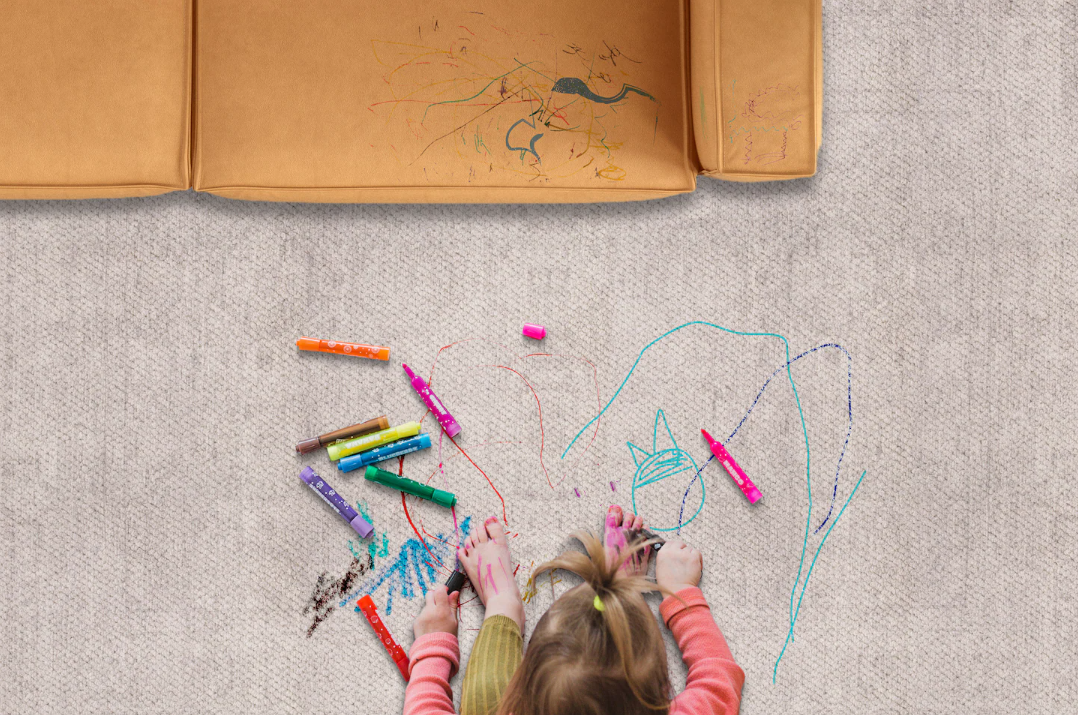Can We Get Kids Off Smartphones?

The exact causes of the Gen Z mental-health emergency will be parsed for years to come, but the severity of the crisis itself is, at this point, beyond question. Members of Gen Z, who were born between the mid-to-late nineties and the early twenty-tens, tend to be lonelier than the members of previous generations. They are more anxious and depressed; they get less sleep. They more commonly think that their lives hold no meaning. They are more likely to harm themselves or experience suicidal ideation. (Suicide deaths among children ages ten to fourteen more than doubled between 2007 and 2017.) They are more wary of, or just less interested in, the things that were once milestones of freedom: drinking, dating, having sex, getting driver’s licenses, moving out of their parents’ houses.
“On average,” the social psychologist and N.Y.U. professor Jonathan Haidt writes in “The Anxious Generation: How the Great Rewiring of Childhood Is Causing an Epidemic of Mental Illness,” “people born in and after 1996 were different, psychologically, from those who had been born just a few years earlier.” From childhood, Haidt suggests, they suffer from a weak “psychological immune system—the ability of a child to handle, process, and get past frustrations, minor accidents, teasing, exclusion, perceived injustices, and normal conflicts without falling prey to hours or days of inner turmoil.” This immunosuppression persists into adolescence and beyond, fostering higher proportions of nervous, avoidant young adults.
For Haidt, the explanation is partly cultural and partly technological. The oldest members of Gen Z were in middle school in 2009 and 2010, when Facebook added the Like button, Twitter added the Retweet option, and smartphones’ front-facing cameras became ubiquitous, launching the age of the selfie. The effect of these tools, Haidt writes, was to attach kids to “a firehose of social comparison” that pummelled their self-esteem at a critical moment of cognitive and psychological development. Studies show that, the more kids use social media, the more likely they are to experience anxiety and depression; girls, Black children, and L.G.B.T.Q. youth are hit hardest. (Boys over all, hypnotized by porn and video games, don’t fare hugely better than girls.) And constant discussion and self-diagnosis of mental-health disorders on TikTok, Instagram, and elsewhere may contribute to what two University of Oxford researchers call “prevalence inflation,” in which people mistake everyday stress and discomfort as signs of a serious disorder “in a way that is ultimately self-fulfilling.” As an example, the scholars note that “interpreting low levels of anxiety as symptomatic of an anxiety disorder might lead to behavioural avoidance, which can further exacerbate anxiety symptoms.”
By the time that smartphones and social media were becoming omnipresent, in the late two-thousands and early twenty-tens, children were also spending less and less time engaged in unstructured, largely unsupervised play with their peers. This deprivation owed to their parents’ concerns for their safety—a fretfulness known as “safetyism”—and to a competitive, college-fixated mind-set that prioritized adult-led, résumé-building, and “enrichment” activities. Unaccompanied kids doing normal kid things like walking home from school or visiting a playground became conspicuous, strange, perhaps even the subject of a 911 call or a C.P.S. investigation. The suburban or small-town nine-year-old who, a generation before, would have been running around outside with the other neighborhood kids all afternoon is now indoors, staring at her phone.
Alas, for her, children who miss out on free play are worse at taking risks, reading social cues, making friends, and resolving conflicts. Improvisational, unmonitored play functions as exposure therapy for life itself. In a commentary published last year in The Journal of Pediatrics which summarized the causal links between free play and mental health, the authors declared that “the decline in children’s independent activity and, hence, in mental wellbeing is a national and international health crisis and should be treated as such.”
Of course, fretting about the deficiencies of contemporary youth is an ancient tradition. Elders have always overreacted to the supposedly mind-altering properties of certain technological advancements, from the printing press to the television set. Haidt is one of America’s more prominent hand-wringers about kids these days, owing to a viral Atlantic piece that he co-authored, in 2015, with the attorney and free-speech activist Greg Lukianoff, headlined “The Coddling of the American Mind.” In that article, and in the 2018 book of the same name, Haidt and Lukianoff portrayed a bubble-wrapped generation that had been raised to be “fragile, anxious, and easily hurt,” and railed against what they identified as a student-directed movement “to scrub campuses clean of words, ideas, and subjects that might cause discomfort or give offense.” The corrosive cleaning agents, according to the authors, included trigger warnings, spurious talk of “microaggressions,” and demands for “safe spaces.” Haidt and Lukianoff argued that Gen Z victims of safetyism were also, in higher ed, its most aggressive perpetrators.
“The Coddling of the American Mind” was a somewhat better book than its reactionary title promised, but Haidt and Lukianoff’s reflexive disdain for left-leaning youth and weakness for caricature had a flattening effect on their analysis. Haidt had risen to public-intellectual fame in the early two-thousands via his work on positive psychology, but “Coddling” turned him into a folk hero in a frequently specious war against cancel culture, winning him fans among the revanchist likes of Joe Rogan, Bari Weiss, and Jordan Peterson. He has often taken a both-sides approach to political conflict that equates leftist activism with deadly right-wing extremism. (A section in “Coddling” that deals with the 2017 “Unite the Right” rally of white supremacists and the counter-demonstrators it drew, in Charlottesville, is an especially egregious example of this tendency.) He has been beset by a troubling fixation on the heritability of I.Q.—a contention widely dismissed as scientific racism—and the purported accuracy of stereotypes. He once argued against a proposal to diversify New York City’s specialized high schools, saying that it would exacerbate racism. On Twitter and Bluesky, I have frequently doomscrolled past the balding, scruff-bearded man who is the visual shorthand of the Clickhole classic “Heartbreaking: The Worst Person You Know Just Made a Great Point,” but I had never felt the heat of his proud, stoic gaze until I found myself nodding along in agreement with much of “The Anxious Generation.”
The cognitive dissonance is especially uncomfortable because “The Anxious Generation” is, to a considerable extent, a reiteration and expansion of “Coddling.” But it is also a vastly superior work. It’s less hung up on campus-outrage stuff, and it benefits from six additional years of research on how smartphones and social media dice the nerves and tamp the spirits of young people, particularly those between the ages of ten and fifteen. These established links are now the stuff of Surgeon General’s advisories, alarming C.D.C. reports, and class-action lawsuits. What was maybe still an educated guess even half a decade ago is now a grim, clinical certainty.
There is also a surprising degree of certainty about possible countermeasures for what Haidt sums up as “overprotection in the real world and underprotection in the virtual world.” In “The Anxious Generation,” Haidt makes four core appeals to parents and educators: more unstructured free play for children, no smartphones before high school, no social media before age sixteen, and no phones in schools. All of these strike me as not just reasonable but irrefutably necessary. What is less clear is whether there is enough collective and institutional will to accomplish them.
During the past year, I’ve been interviewing parents who have attempted to block or strictly limit their tween and teen-age children’s use of smartphones and social media. Conversations with these parents—all of whom live in the New York City area, and whose kids attend a mix of public, charter, and private schools—hit common refrains. Parents worried about their kids saying or doing something foolish that, if captured and circulated via smartphone, would haunt them for the rest of their lives. They were infuriated that tech companies, abiding by federal law, effectively give kids online emancipation from their parents at the arbitrary and absurdly young age of thirteen and, even then, barely bother with age verification. (One talked about falsifying her kid’s birth date on Google’s Family Link in order to keep full control over the service.) They lamented the friction and distrust sown by devices—I heard about kids who kept surreptitiously changing the parental settings on their social media, or who have finstas full of duck face and provocation, or who sneak phones into their bedrooms and stay up with them all night.
A thread of safetyism still prevails among these parents. Some resisted buying their child a device but felt they had no choice once the kid started taking the subway or walking to school without adult accompaniment. And I was surprised by the extent to which G.P.S. location-tracking of kids is treated as a given, as ubiquitous and indispensable as backpacks and sneakers. Several parents said that they weren’t sure how to balance preserving their children’s privacy—their ability to have a sacred space carved out from their parents to grow into themselves—and monitoring their online and offline behavior in order to keep them safe. One told me, “I am definitely a helicopter parent, and my generation is full of helicopter parents, because we’ve given them access to this, like, horrifying void.”
These parents noticed how lonely their kids often seem to be, and how social media simultaneously fills and widens that emptiness. Although online forums can provide some of the togetherness that young people crave, ideally, Haidt writes, most of their interactions should unfold in person, unmediated by screens, which requires emotional effort and investment. In reading “The Anxious Generation” and speaking with parents, I frequently thought about what the late literary and cultural theorist Lauren Berlant called “the inconvenience of other people”—the “affective sense of the familiar friction of being in relation. At a minimum, inconvenience is the force that makes one shift a little while processing the world.” Using your mind and body to interact extemporaneously with other minds and bodies is a skill that dulled during the pandemic; it can be boring, or frustrating, or distressing; it demands time, compromise, and accommodation. The inconvenient person, Berlant wrote, is “someone you trip over, even just in your mind.” Kids need to trip over people and ideas, at the risk of scraping up their psyches, in order to learn how to move through the world and how to connect meaningfully with the people in it.
Many teens are aware that smartphones disrupt their sleep, their moods, and their self-image, but they believe, as several parents told me, that giving up their phones would kill their social lives. Research has shown that, when adolescents abstain from social media for a while, their mental health improves even as their isolation from their friends who are still on the platforms increases; a smart, emotionally intelligent kid can recognize the merits of this trade-off and still choose to keep their TikTok and Snapchat accounts. (A University of Chicago working paper published last year found that fifty-seven per cent of college students who are active users of Instagram would “prefer to live in a world without the platform.”) One parent talked about her daughter’s experience at a prestigious summer program, where, not long after arriving, she found herself sitting with a group of other new arrivals; rather than getting acquainted, the rest of the kids were all staring at their phones, and she didn’t have one. She told her mother, “It was so stupid. But, in that moment, I wanted to be stupid, too.”
Several of the parents favorably mentioned the Wait Until 8th movement, which encourages parents to sign a pledge not to give their children smartphones until the end of eighth grade or later. But few parents expressed much hope about forging collective action against phones, in part because they didn’t know enough other families who were sufficiently informed or exercised about the risks. Haidt stresses that his core recommendations require commitment from a critical mass of parents, schools, and communities in order to weaken the network effects of social media and free teen-agers to pursue other means of fulfilling their God-given right to be stupid together. But achieving this threshold seems especially difficult in a large city. “There’s just no way—it’s too big a cohort, there’s no community, you don’t know who the parents are,” one mother told me. “Maybe in a smaller town.” Another mom was looking forward to summer, when her sixteen-year-old would be going to camp with seven friends; the parents all knew one another and had come to an agreement that none of the kids would bring their phones with them.
The overwhelming consensus among these parents was that schools should stringently limit or ban cell-phone use, a measure that has growing legal momentum in some states. Last year, Ron DeSantis, the governor of Florida, signed a law that prohibits students’ use of cell phones during instructional time and curtails the use of TikTok in schools; just this week, he approved a law barring children under age fourteen from holding accounts on social-media platforms. Earlier this month, Indiana’s governor, Eric Holcomb, signed a law requiring school districts to implement policies banning phones, tablets, and other devices in the classroom, with some exceptions. Last year, Utah sued TikTok and Meta for being addictive and harmful to children, and passed laws tightening age-verification and parental-consent requirements for social-media accounts; more recently, Utah’s governor, Spencer Cox, has been urging principals and school-board members across the state to remove cell phones during class. At least three other states have introduced legislation that would require or incentivize schools to go phone free.
Individual schools that already enforce ironclad no-phones policies seem to be ecstatic about their results. Last year, the School of the Future, a public school in Manhattan, began requiring students to use Yondr phone-locking pouches for the entirety of the school day. In March, the administration sent an e-mail to parents describing the policy as a “massive success,” citing “increased student engagement in the classroom, less time spent in the bathrooms and hallways, more genuine connections within the community and a decrease in reports of cyberbullying.”
Surprisingly, though, the biggest opponents of the movement for phone-free schools are parents. In a truly apocalyptic essay for Slate titled “The Parents in My Classroom,” a ninth-grade English teacher in Evanston, Illinois, describes, among other abominations, a mother who expected her kid to text her every class period, a mother whose kid sent her a photograph of a quiz he was in the middle of taking (she immediately e-mailed the teacher to ask if her son could take it the next day), and parents who ran surveillance on their children’s classes via their school-issued Chromebooks. (One mother, during a discussion of “Romeo and Juliet,” fired off an e-mail with the subject line “I CAN HEAR EVERYTHING AND I DON’T LIKE IT.”)
Despite the general consensus about kids and phones, the increasing reliance of schools on tablets and laptops means that most students are simply trading one screen for another, with many remaining glued to some permutation of social media, video games, and their hovering parents. One mother told me that she smashed a laptop to pieces when she discovered that her daughter, who was forbidden to go on Instagram, had been using the platform to message friends during classes. “There is not one adult who will say, ‘Social media and constant phone use is good for our kids,’ ” this parent said. “And we’re not doing anything about it. It’s crazy.”
My children are seven and nine, not yet at the age when all of their friends have smartphones. My perhaps naïve hope rests in providing them enough freedom in the real world now so that they never lose their taste for it, lessening the chances that I will eventually lose them to the horrifying void. Last year, my older child began running errands around our Brooklyn neighborhood on her own: picking up a few items at the grocery store, dropping off a picture at the framing shop. She didn’t carry a phone or a G.P.S. tracker, and I didn’t worry about her getting lost or kidnapped. She was surrounded by what Jane Jacobs called “eyes on the street.” I considered the chances that a nosy stranger might call the cops about a solo child, but those odds struck me as low—mostly because my daughter is tall for her age, but also because the guys at the Dominican bodega knew her, and the guys at the Yemeni bodega knew her, and so did any number of neighbors she would pass on the sidewalks. The only possibility that really bothered me was the risk of her getting hit by a car. Sometime during the pandemic, the streets surrounding our apartment building had turned into a homicidal four-wide drag race. I warned her about an especially chaotic intersection, and she promised that she’d cross it only if other people were crossing at the same time—an ad-hoc buddy system.
The collective task of giving younger kids more physical and psychological space to roam is daunting. It would involve somehow loosening the grip of time-intensive competitive-sports programs on entire communities. It would require reversing decades-long trends not only in the privatization of public space but in housing, municipal planning, roadway design, and traffic-law enforcement, which have rendered the U.S. one of the least walkable developed countries in the world. It would also demand undoing the safetyist mind-set. However laissez-faire a parent might wish to be, if you drop off your capable third grader for an afternoon of free exploration around the Prospect Park ravine, you can expect some questioning from an officer of the Seventy-eighth Precinct later that day.
In “The Anxious Generation,” Haidt suggests one relatively easy remedy, realizable in the short term, that schools could take on themselves: opening their playgrounds after school for “mixed-age, ‘loose parts’ free play,” in which kids don’t have access to phones but otherwise have “nearly complete autonomy.” During these sessions, adults, like lifeguards, would “intervene only in the case of an emergency.” These play clubs are, of course, geographically constrained, and structured in their unstructuredness. Many schools may lack the right sorts of playgrounds or may be scared off by liability concerns. But it’s an idea—a start.
Haidt also praises “adventure playgrounds,” such as the Yard, on Governors Island, in New York City, a no-parents-allowed zone where children and teen-agers are provided with tools and materials such as wood, saws, hammers, nails, tires, paint, and fabric and given near-free rein to create and destroy. The Yard, which implicitly asks the question “What if ‘Lord of the Flies’ had worked out?,” was one of my kids’ favorite places in the whole city—my son would have gone every weekend if we could have managed all the ferrying—and I’ve never been inside it. A sign near the entrance reads “your children are fine without advice & suggestions.”
Last summer, my kids and I moved away from the city, into a big house in a small town. As in many other American places, the residential streets are eerily quiet, even on the nicest afternoons, and much of family life revolves around organized sports. There’s an unfinished attic space above our garage, and, bored one afternoon in early spring, the kids wandered in and started tinkering. They ran the Shop-Vac over the floor and laid down a rug with a rainbow on it and hung a paper lantern from the low rafters. They found a pile of old wooden boards and some nails and started hammering the boards into the walls where insulation was exposed—a kind of discount shiplap. A friend who fixes up and sells houses for a living came over to make sure the space was properly ventilated. From time to time, he drops by and leaves little offerings at the attic door—a crate full of loose tools, a standing fan. I don’t go into the attic unless I’m invited.
The best day was when the kids found a bunch of old paint samples and painted the exterior attic door with a splotch of International Klein Blue that you can see from way up the street. There were still some loose boards lying around, so they painted those green and yellow and then hammered them into place—not the order of operations that I would have recommended, but I am not the one in charge. They banged away at it for hours while I sat inside, mostly undisturbed, reading about what comes next.
Keywords
Newer articles
<p>A bill that will ban TikTok in the United States unless its Chinese owner divests from the company has passed overwhelmingly.</p>
Congress gets closer to forcing TikTok to be sold or face US ban: What's ne
Ukraine ‘will have a chance at victory’ with new US aid, Zelenskyy says
Israel Iran attack: Damage seen at air base in Isfahan
Ukraine war: Kyiv uses longer-range US missiles for first time
Who will be Trump’s VP? A shortlist
Congress passes bill that could ban TikTok after years of false starts
House passes potential TikTok ban that could speed through Senate
How soon could US ban TikTok after Congress approved bill?
Finally, America’s Congress does right by Ukraine




